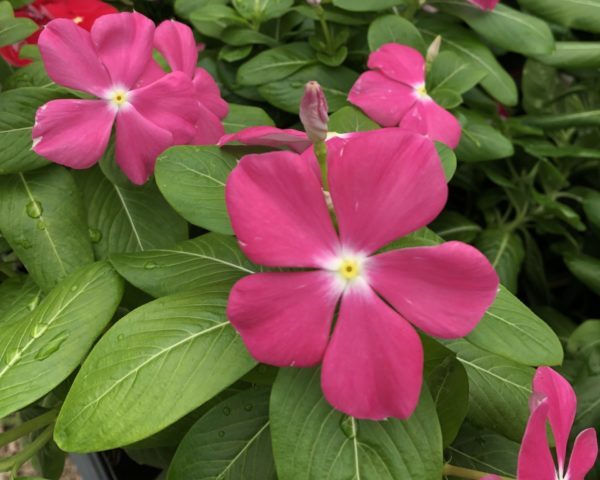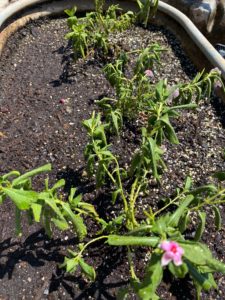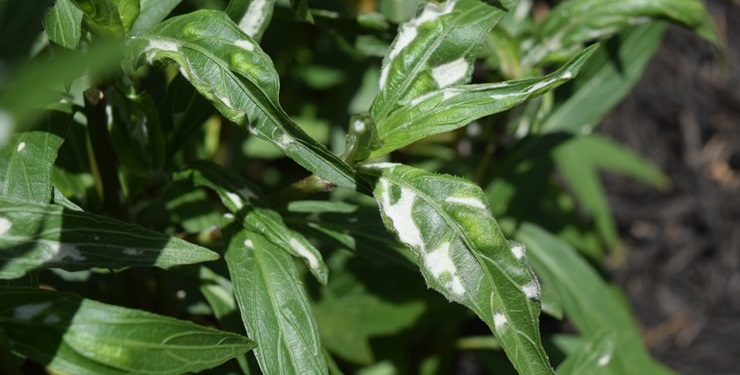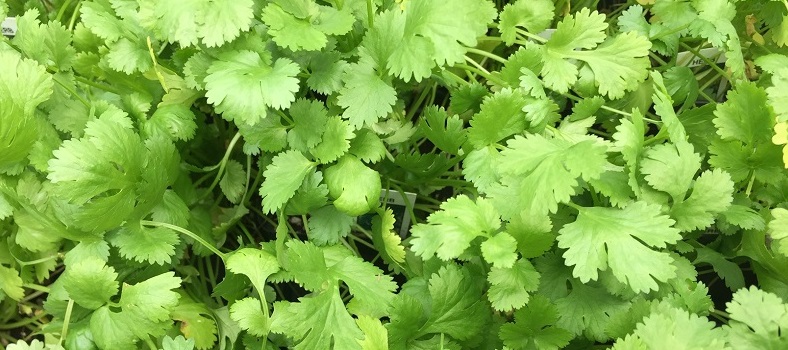Anyone who has planted Periwinkle, or Annual Vinca, in the spring in Central Texas will tell you “that plant always dies when I plant it”. Well, there is a reason for that! Periwinkle, especially in the “old” days, before resistant varieties were available, was never grown until the cool wet weather of spring was behind us. It absolutely thrives in the scorching hot summers, but give it rain and cool weather, and disease takes over!
Phytophthora fungus is the causal organism for both Aerial blight and Root blight on Madagascar Periwinkles. As mentioned above, the disease thrives in cool wet weather. Most bedding plant growers will not even attempt to begin growing it until the weather has begun to warm, for that reason. This aggressive disease is soil borne, and causes the plant to wilt,turn black and die. Once the Phytophthora fungus is in the soil, it is very difficult to control if the conditions for the disease are there. In the “old” days, we would “fumigate” the soil with chemicals that are no longer used. Thankfully, we now have biological means to control this destructive fungus.
The “secret” to growing Periwinkle is to wait until the cool weather and spring rains are over, choose resistant varieties (almost all plants on the market today are resistant), and inoculate the soil with a bacterium called Streptomyces lydicus. When introduced into the rootzone, S. lydicus colonizes plant structures and forms a mutually beneficial relationship by feeding off of the plant’s waste and secreting beneficial byproducts. These by products have a high level of chitinase (an enzyme) that breaks down chitin, a key structural component of fungal cell walls. This forms a defensive barrier around the plant, which in turn keeps pathogens out.
Our favorite organic multi-purpose fertilizer, MicroLife 6-2-4 contains strains of Streptomyces lydicus. Using these organic products will help control Phytophthora fungus on early-planted Periwinkle. Don’t forget to plant them in well-drained soil and let the soil approach dryness between watering.








I just purchased and planted some variegated Vinca major ‘Variegata’ (Big Periwinkle). Is it susceptible to the same fungus issues as the annual Periwinkle?
Hi Brenda. No, Vinca major does not have the issue with Phytophthora that Annual Vinca has.
I’m confused, is Periwinkle and VINCA THE SAME PLANT?
Annual Vinca is often called Periwinkle, not to be confused with the evergreen ground cover Vinca major.